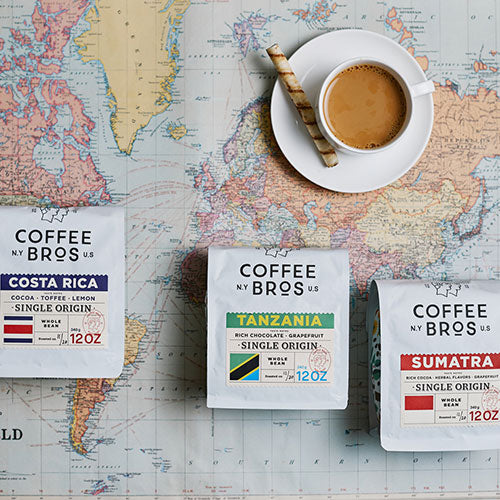Collection: Tanzania
-
Tanzania | Acacia Hills | SL28 Washed
A rare find in Tanzania showcasing the cultivating and processing progress being made in the region
A rare find in Tanzania showcasing the cultivat...
Regular price $24.99Regular priceUnit price / per
Collections
-

All Coffee
Experience the best specialty coffee with our selection of Signature Series, Single-origin,...
-

Single Origin
All of our single-origin coffees in this collection are 86+ point coffees...
-

Signature Blends
Our Signature Blend coffees showcase unique flavor profiles that shine across any...
All About Coffee from Tanzania
What is the history of coffee in Tanzania?
Tanzania has a long history of coffee use, particularly among the Haya people who chewed the coffee fruit. German colonists introduced Arabica coffee as a cash crop, and the industry was developed around Mount Kilimanjaro. The British took control after World War I and aimed to make the coffee industry more efficient like Kenya. In the 1920s, smallholder farmers formed cooperatives to improve market access, but it took a long time for Tanzanian coffee to gain international recognition. The country became the Republic of Tanzania after independence from Britain and combined Tanganyika and Zanzibar. Despite efforts to increase production in the 1970s, growth was difficult. In the 1990s, efforts to reform and privatize coffee exports allowed growers to sell directly, making Tanzanian coffee famous for separated-out peaberry lots in the Western world.
What is Tanzanian Peaberry coffee?
Peaberries are a unique form of coffee seed that form a single, round shape instead of the usual two flat beans within a coffee cherry. Although 5-12% of coffee yields can contain peaberries, some varieties and origins have a higher occurrence, while others sort them out for uniformity in size. In Tanzania, most of the coffee exported is bought by Japanese roasters who prefer uniform size and view peaberries as a defect. Therefore, the majority of peaberries are not sold to the Japanese market and are available to Western buyers. Some claim that peaberries have a stronger flavor compared to flat beans, while others cannot tell the difference. Peaberries tend to be more expensive due to their limited quantity and the sorting process.
What coffee processing methods do they use in Tanzania?
The most common method of processing coffee in Tanzania is the Washed process.
What are the common coffee varietals in Tanzania?
The common coffee varieties found in Tanzania are Arusha, Bourbon, Blue Mountain, and Kents.
Where are the most common coffee growing regions in Tanzania?
The primary coffee-growing areas in Tanzania include Arusha, Kigoma, Kilimanjaro, Mbeya, Ruvuma, and Tarime.
When does the coffee harvest begin in Tanzania?
The coffee harvest season in Tanzania occurs in South Tanzania from May to September and in North Tanzania from July to November.
How is Tanzanian coffee graded?
The size-based grading system for Tanzanian coffee starts with the largest grade AA, followed by A, B, PB, C, E, F, AF, TT, UG, and TEX.
- Choosing a selection results in a full page refresh.





